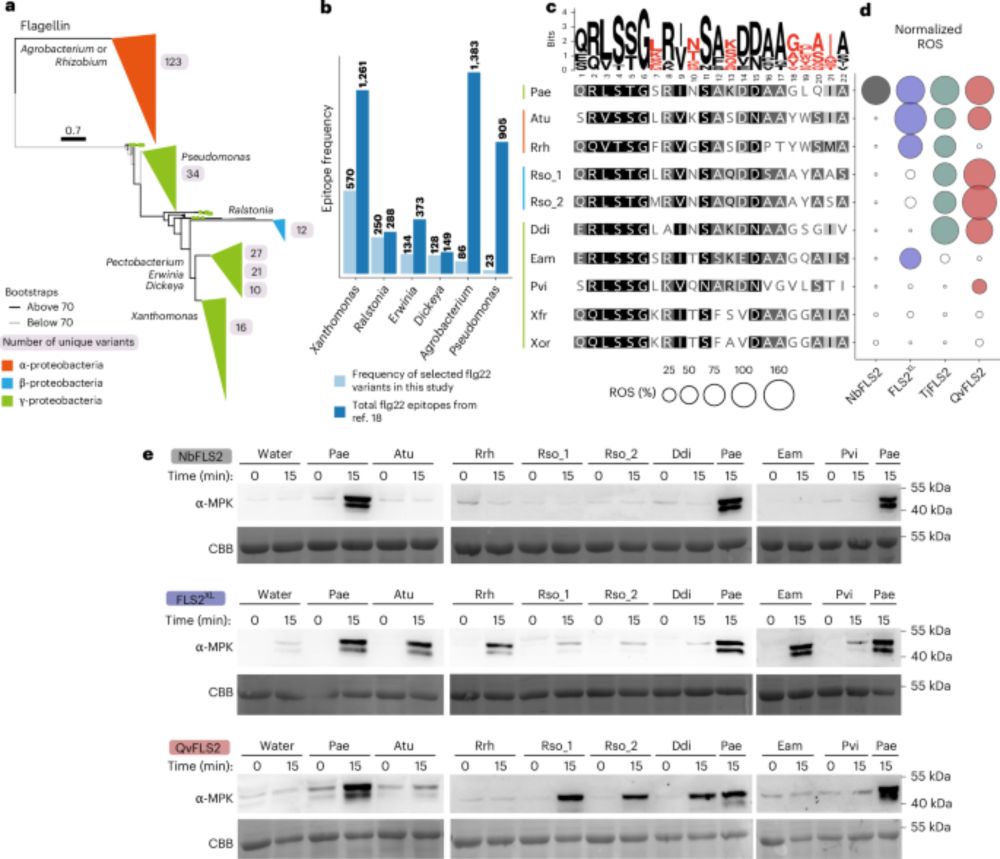We asked how can protein complexes diversify without compromising their function and explored this question using the plant #exocyst complex.
www.nature.com/articles/s41...

We asked how can protein complexes diversify without compromising their function and explored this question using the plant #exocyst complex.
www.nature.com/articles/s41...
The brainchild of @delaconcepcionjc.bsky.social, Nick Irwin and our fantastic collaborators is now out in @natplants.nature.com www.nature.com/articles/s41...
Here’s why I love this work — and why I think you’ll enjoy it too. 👇

The brainchild of @delaconcepcionjc.bsky.social, Nick Irwin and our fantastic collaborators is now out in @natplants.nature.com www.nature.com/articles/s41...
Here’s why I love this work — and why I think you’ll enjoy it too. 👇

@harshithcy.bsky.social from @shivaprasadpv.bsky.social's lab identified the role of transcription factor OsWRKY53 that dictates wound responses in rice. It fine-tunes wound responses by turning on defence-related genes while turning down growth-related ones.
bit.ly/4ojkJgT

@harshithcy.bsky.social from @shivaprasadpv.bsky.social's lab identified the role of transcription factor OsWRKY53 that dictates wound responses in rice. It fine-tunes wound responses by turning on defence-related genes while turning down growth-related ones.
bit.ly/4ojkJgT
Resistance against bacterial wilt in tomato is linked to variety-specific proteomic changes; the CAPE1 peptide restricts Ralstonia solancearum growth in planta - Zhang et al. 🦠🍅
🔗 doi.org/10.1093/jxb/...
#PlantScience 🧪 @bactodeath.bsky.social

Resistance against bacterial wilt in tomato is linked to variety-specific proteomic changes; the CAPE1 peptide restricts Ralstonia solancearum growth in planta - Zhang et al. 🦠🍅
🔗 doi.org/10.1093/jxb/...
#PlantScience 🧪 @bactodeath.bsky.social
Immune proteases are promising targets for protein engineering 🛠️ to boost disease resistance in plants 🌾 - Schuster et al.
🔗 doi.org/10.1093/jxb/...
#PlantScience 🧪 @marischuster.bsky.social @aciattoni.bsky.social

Immune proteases are promising targets for protein engineering 🛠️ to boost disease resistance in plants 🌾 - Schuster et al.
🔗 doi.org/10.1093/jxb/...
#PlantScience 🧪 @marischuster.bsky.social @aciattoni.bsky.social
Comparative analysis of small secreted peptide signaling during defense response: insights from vascular and non-vascular plants https://bit.ly/4eAUnmZ

Comparative analysis of small secreted peptide signaling during defense response: insights from vascular and non-vascular plants https://bit.ly/4eAUnmZ
We identified evolutionary origins of many fungal effectors!
We show that fungi secrete lots of antimicrobial proteins, and that some of them were repurposed by plant pathogens for host immune suppression.
www.biorxiv.org/content/10.1...
cc @teamthomma.bsky.social

We identified evolutionary origins of many fungal effectors!
We show that fungi secrete lots of antimicrobial proteins, and that some of them were repurposed by plant pathogens for host immune suppression.
www.biorxiv.org/content/10.1...
cc @teamthomma.bsky.social
👇 A quick thread + link:
www.biorxiv.org/content/10.1...

👇 A quick thread + link:
www.biorxiv.org/content/10.1...


Learn more in a new #SciencePerspective: scim.ag/44y3iC6

Learn more in a new #SciencePerspective: scim.ag/44y3iC6
🧑🔬 Kristina S. Munzert, Timo Engelsdorf
📔 @jxbotany.bsky.social
🔗 academic.oup.com/jxb/advance-...
#️⃣ #PlantScience #PlantImmunity #DarwinReview #PlantCellWalls

🧑🔬 Kristina S. Munzert, Timo Engelsdorf
📔 @jxbotany.bsky.social
🔗 academic.oup.com/jxb/advance-...
#️⃣ #PlantScience #PlantImmunity #DarwinReview #PlantCellWalls

